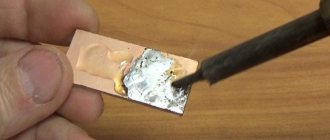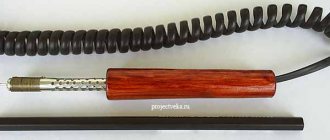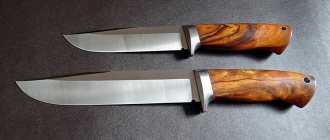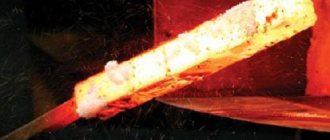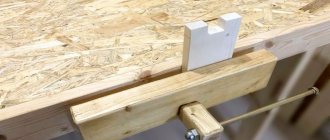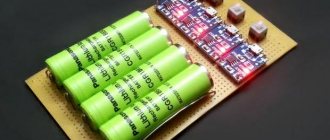Positive properties
Rosin was obtained from cuts of coniferous trees. Volatile components were evaporated. The remainder was three-quarters of the original mass of resin. Rosin for soldering was used only after such preliminary preparation.
Everything would be great, but when working, you need to dip a hot soldering iron into the resin flux. The main tool is then covered with chemical mud, so that the working area is not very visible.
Over time, it became clear that liquid rosin as a flux is much more convenient to use. Due to the presence of natural resin substances of a soft acidic nature, it:
- perfectly removes the oxide layer on parts;
- spreads well;
- occupies the entire adhesion site.
Ethyl (wine) alcohol was and continues to be used as a solvent, producing an alcohol-rosin composition . Rosin is also highly soluble in acetone, benzene, gasoline and some other organic solvents.
Ethanol is the safest and most convenient solvent option for rosin. In terms of chemical properties, isopropyl alcohol is close to ethyl alcohol, but it is much more difficult to find in everyday practice. This is purely a chemical reagent.
Recipe for liquid flux made from rosin and alcohol
To make liquid flux, you will still need the same rosin. It is best to use pine rosin, and not some other rosin. You will need to have a small piece, which we will crush during the process of making flux.
You will also need pure ethyl alcohol or solvent. It is best not to experiment and use solvent 646 to make flux - the best of its kind.
To have somewhere to pour the flux, you need a container. A bottle with a small nail polish brush would be just the ideal option. In this case, using a homemade flux for soldering will be much more convenient and simpler.
Application
Alcohol-rosin flux has not lost its relevance for many years due to its ease of use and positive soldering results.
It guarantees a strong connection of many parts, especially copper products. Using alcohol-rosin flux, radio circuits and boards are soldered. It spreads well, reaching hard to reach places. When working, low-melting solders are used (up to 330 ℃).
Currently, a full range of soldering products is on sale, including SKF alcohol-rosin flux. Both domestic and foreign manufacturers are trying.
You can buy ready-made SCF flux and not do anything on your own. If all proportions are met in accordance with the standards, the composition will live up to expectations.
How to dissolve rosin for soldering?
Flux is a substance, both organic and inorganic, that ensures the removal of oxides from soldered conductors, reduces the force of surface tension, and also improves the uniformity of spreading of molten solder. In addition to its main purpose, flux can protect contacts from environmental influences, but it should be noted that not all types of fluxes have this property.
Depending on the need, flux can be in the form of liquid, powder or paste.
Solder pastes are also produced that contain solder particles along with flux, and all modern solders are a tube of solder inside which there is a flux filler.
According to the temperature regime and activity interval, fluxes can be divided into low-temperature (up to 450 degrees) and high-temperature (more than 450 degrees). In addition, the flux can be aqueous or anhydrous.
Based on their chemical properties, all fluxes can be divided into acidic (active) and acid-free. In addition, there are also activated and with anti-corrosion protection.
Active fluxes
mainly consist of hydrochloric acid and chloride or fluoride metals. The pharmaceutical drug acetylsalicylic acid (aspirin) has long been used as an active flux. These fluxes very intensively dissolve the oxidized layer on the surface of the metal, and the soldering immediately becomes high-quality and durable, but the flux residue after soldering causes intense corrosion of the joint and the base metal in the future. Therefore, it is recommended to wash off all flux residues that remain at the soldering site.
When soldering radio-electronic elements, the use of active fluxes is not permissible, since over time their residues still corrode the place where thin radio elements are soldered.
Acid-free fluxes
, mainly these are rosin and fluxes prepared on its basis with the addition of alcohol, turpentine or glycerin. During the soldering process, rosin cleans the surface of oxides and also protects it from oxidation. At a temperature of 150 degrees, rosin dissolves the oxides of lead, tin and copper, cleaning their surface during the soldering process and the soldered joint becomes shiny and beautiful. But most importantly, unlike active fluxes, rosin fluxes do not cause corrosion and corrosion of metal. Copper, bronze and brass are soldered using rosin fluxes.
Activated fluxes
, mainly, in addition, they consist of rosin to which a small amount of hydrochloric acid or phosphate aniline, salicylic acid or diethylamine hydrochloride is added.
These fluxes are used for soldering the bulk of metals and alloys (iron, steel, high-quality stainless steel, copper, bronze, zinc, nichrome, nickel, silver), even oxidized elements from copper alloys in the absence of preparatory cleaning.
Activated fluxes are considered to be LTI fluxes, which contain ethyl alcohol (66 - 73%), rosin (20 - 25%), aniline hydrochloride (3 - 7%), triethanolamine (1 - 2%). LTI flux gives excellent results when using tin solders POS-5 and POS-10, providing increased strength of the soldered joint.
Anti-corrosion fluxes
used for soldering copper and copper alloys, constantan, silver, platinum and its alloys. They contain phosphoric acid with the addition of various organic compounds and solvents. Some anti-corrosion fluxes contain organic acids. Residues of these fluxes do not cause corrosion.
VTS flux, for example, consists of 63% of those. Vaseline, 6.3% triethanolamine, 6.3% salicylic acid and ethyl alcohol. Remains of flux are removed by wiping the part with alcohol or acetone.
Protective fluxes protect the previously cleaned metal surface from oxidation and do not have a chemical effect on the alloy. This group includes inactive materials: wax, petroleum jelly, olive oil, sweet powder, etc.
How to do it yourself
Many home craftsmen prefer to prepare alcohol-rosin flux with their own hands. In this case, they are confident in the content, and the process takes a few minutes.
First, the resin must be thoroughly crushed. The better this is done, the faster the uniform distribution of all substances in the solvent will occur. The result is a high-quality alcohol-rosin flux.
You can wrap a piece in thick fabric. Some solders advise using cellophane, although it is less durable. It may tear during subsequent procedures.
The wrapped rosin is placed on a sturdy table, then methodically smashed with a hammer to a powdery state. The most dexterous craftsmen manage to use ordinary meat grinders for grinding.
In other practices, crushed rosin in a sheet is rolled out with force with a rolling pin or a thick bottle. The main goal is clear. To prepare alcohol-rosin flux, you need to obtain a dusty powder.
After grinding, the resin is carefully poured into a bottle or vial. Many people like containers for nail polish or perfumes and cosmetics. Dust should not fly across the table. You need to get used to it and do it carefully.
Then medical alcohol is poured into the bottle. The composition of the alcohol-rosin flux is almost ready. The recommended liquid to dry ratio is 2 to 3.
If you need a more viscous flux, you can increase the proportion of resin. Each master can choose the concentration of the rosin solution in alcohol independently, focusing on personal experience, the specifics of the work to be done, and the nature of the details.
If the pieces of resin were not crushed enough, it will be a little more difficult to dissolve the rosin. You will have to wait a couple of days for the alcohol-rosin flux to become homogeneous.
Substances for production
You can prepare your own soldering flux using substances such as alcohols, acids, and oils of various origins. They are valued for their high antioxidant properties and good solubility.
When choosing how to make flux for soldering, preference can be given to the simplest substance - acetylsalicylic acid, or, more commonly, aspirin. You can easily find it in a pharmacy, or even find it in your home medicine cabinet. This drug has a low cost. Before starting work, dissolve an aspirin tablet in a small amount of liquid until the sediment disappears.
Instead of aspirin, white citric acid granules can be used. When using aspirin or citric acid, a significant amount of gas is released, so the room where soldering occurs must have adequate ventilation.
Rosin and glycerin
Liquid flux can be prepared from rosin. Before making flux, you need to crush the rosin into a fine powder using a wooden hammer. The preparation time of the flux depends on the degree of grinding.
Then dissolve this powder, which has the consistency of powder, in ethyl or medical alcohol using a glass container. After thorough stirring, the solution should be left for some time to completely dissolve.
Next, to completely dissolve the rosin in alcohol, place the settled solution in a hot water bath and heat it to a temperature of 80 degrees. During heating, the solution must be constantly stirred, and then wait until it cools. For soldering, it is convenient to draw the solution with a syringe.
Glycerin flux can be prepared in a similar way by dissolving rosin not in alcohol, but in glycerin. Rosin crushed into powder will take longer to dissolve in glycerin, but the solution itself will be thicker, which will make working with it easier. The quality of the composition will improve if you first dissolve the crushed rosin in ethyl alcohol and mix the solution with glycerin. This mixture must be washed off after soldering.
Acid based
Recommendations on how to prepare acid-based soldering flux include hydrochloric acid and phosphoric acid. High concentration hydrochloric acid must be diluted in half with water. This solution is poured into zinc granules placed in a glass container.
The dissolution of zinc in hydrochloric acid is accompanied by a violent reaction consisting of a significant release of hydrogen. Therefore, the room must be well ventilated. There should be no open fire near the place of work.
Flux obtained using hydrochloric acid can be used to solder steel products. By adding a little ammonia to the solution, it becomes possible to solder various metals and alloys. A successful flux is obtained using phosphoric acid. It can be used when joining stainless steel products.
Liquid fluxes can be applied to products with a thin brush. Store in a glass container with a narrow neck to reduce the possibility of evaporation.
Fat mixtures
Soldering fat is of interest mainly to professional welders. However, even in this case it is possible to make flux paste with your own hands. Solder fat received this name due to its external resemblance to a substance of animal origin.
To prepare neutral solder fat, a mixture of rosin and stearin is used. It successfully dissolves the existing oxide film. Soldering with its use is carried out with fewer problems. The fluidity of solder increases, which makes it possible for it to get into various crevices and uneven surfaces. Due to its good solubility, such a paste is easy to remove from the surface after the end of the process.
The essence of neutral soldering flux is that after the soldering tip heats it, it goes into liquid form and, when burned out, forms a protective film, the function of which is to prevent surface oxidation.
Another form of paste is active solder grease. It contains substances such as petroleum jelly, zinc, ammonium chlorides and paraffin. This flux is used for soldering heavily oxidized surfaces, as well as metals that are difficult to undergo this process.
The use of active solder fats is not recommended for working with electronics and other delicate items, since aggressive substances can destroy delicate parts.
Is it possible to replace alcohol?
Some experienced soldering workers who are trying to save alcohol for other purposes advise using cheap colognes. The recommendation is controversial. It will smell nice, but the additives contained in the perfume can harm the soldering area.
Advice to use vodka instead of alcohol is also not very legitimate. Rosin is an organic product and does not dissolve well in water. Vodka is a mixture of alcohol and water. It is much more difficult to dissolve resin in a vodka mixture, even if the vodka is of high quality.
Considering that at home, flux consumption is measured in moderate quantities, you can buy medical alcohol. The guaranteed quality of the alcohol-rosin mixture is worth the effort . In practice, homemade flux, made correctly, is not inferior to commercial products.
Do-it-yourself alcohol-rosin flux SKF
Author: Vladimir Vasiliev · Published November 7, 2015 · Updated August 29, 2018
Hi all! I am glad to see you all on my amateur radio blog dedicated to electronics and other technical creativity. Today it’s Saturday and it’s November outside the window, so we’re getting ready for the cold - winter is just around the corner.
And I have an article for you, which may not be very long, but it will definitely bring you a bit of useful information. Today I will talk about SKF alcohol-rosin flux, how you can prepare it with your own hands, and also where you can buy SKF flux. Read the article further and find out everything... but don't forget to subscribe to updates!
Alcohol solution of rosin
The main function of rosin during soldering is to protect metal surfaces from oxidation. A solution of rosin in ethyl alcohol spreads better over a metal surface than molten rosin, making soldering more economical and the junction itself cleaner. Rosin in the form of a solution is applied to the cleaned metal surfaces before the soldering area is heated, which in turn further prevents the oxidation of these surfaces. A solution of rosin in ethyl alcohol is less toxic than a solution in acetone, which is why it is most widely used in technology.
Obtaining rosin
If necessary, you can obtain rosin yourself. Spruce or pine resin is suitable as a raw material. Take an old ceramic cup and wrap the inside of it with aluminum foil. Separately, melt the resin in a metal canned jar and bring it to a boil. Remove debris that floats to the surface with a metal spoon. Once the boil has finished, quickly pour the liquid into a cup covered with foil. Wait for the rosin to cool, shake it out of the cup and peel off the foil. This process is flammable; this work must be carried out outdoors. During the dry distillation of oleoresin, turpentine is released, the vapors of which are toxic and should not be inhaled. For the same reason, resin cannot be used for soldering.
